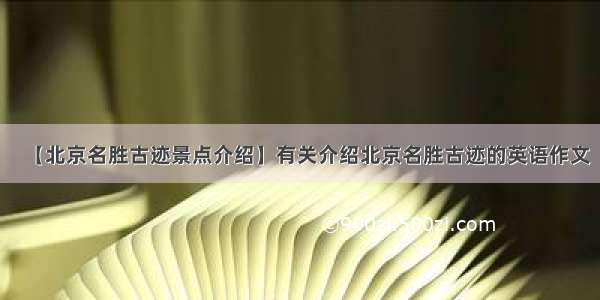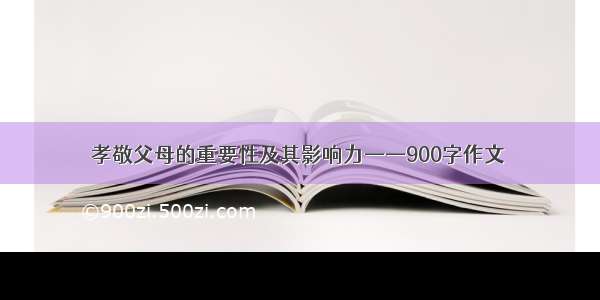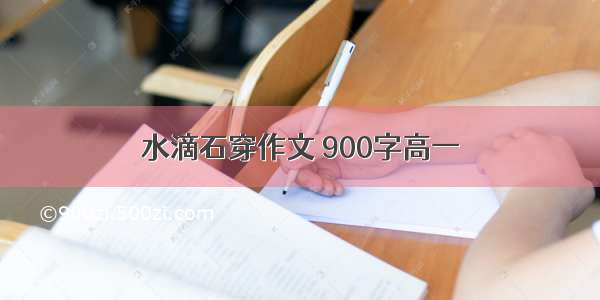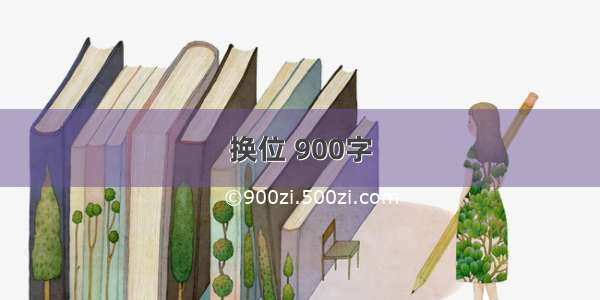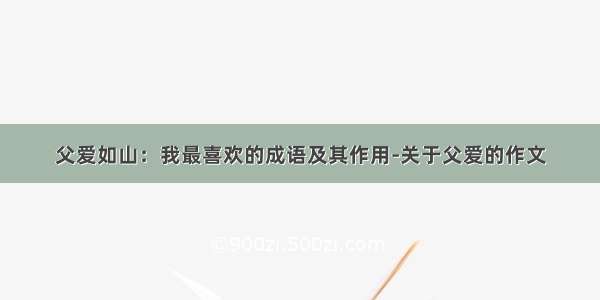
名胜古迹英文(Ming sheng gu ji ying wen) is the English translation of famous tourist attractions or historical sites in China. It is essential to learn these words and phrases when planning a trip to China or communicating with Chinese people who are familiar with these sites. This article will introduce the most famous Ming sheng gu ji ying wen with the intention to provide an overview for those interested in Chinese culture and language.
2. The Great Wall
The Great Wall of China is one of the most popular tourist attractions, and it is referred to as Chang Cheng(长城) in Chinese. The wall is 13,170 miles long and was initially built in the seventh century to protect China from northern invasions.
In English, it is known as The Great Wall, and it is important to mention that it is not a single wall but a series of fortifications built over different eras. When talking about the Great Wall with a Chinese person, one may hear phrases like \"the Great Wall in Beijing\" (北京长城) or \"the Great Wall in Shanxi\" (山西长城) as there are different sections of the wall in different parts of China.
3. The Forbidden City
The Forbidden City is an iconic attraction located in Beijing - the capital of China. It was built in the Ming Dynasty and served as the imperial palace for several centuries. The Palace Museum (故宫博物院) today is one of the most visited tourist attractions in China.
In Chinese, The Forbidden City is called Zijincheng(紫禁城), which translates to purple forbidden city. The Chinese name derives from the fact that purple is a color reserved for emperors in ancient Chinese culture.
4. The Terracotta Warriors
The Terracotta Warriors(兵马俑) are a collection of terracotta sculptures that depict the army of the first emperor of China, Qin Shi Huang. The army is believed to have been buried with the emperor in 210 BCE to protect him in the afterlife.
The Terracotta Warriors are located in Xian and are one of the most popular tourist attractions in China. In Chinese, they are referred to as Bing Ma Yong (兵马俑).
5. The Temple of Heaven
The Temple of Heaven(天坛) is a religious landmark located in Beijing, built during the Ming Dynasty. The temple was used by emperors for annual ceremonies to pray for good harvests.
In Chinese, the temple is called Tiantan (天坛), which directly translates to heavenly altar. It is an impressive architectural structure known for its circular shape and decorative details.
6. The Summer Palace
The Summer Palace(颐和园) is a palace and a royal garden located in Beijing. It was originally built in 1750, and the palace served several different emperors over the years.
In Chinese, it is referred to as Yiheyuan (颐和园), which means he garden of peace and harmony. The Summer Palace is a UNESCO World Heritage Site, attracting millions of visitors each year.
7. The Potala Palace
The Potala Palace(布达拉宫) is a palace located in Lhasa, Tibet, and serves as the spiritual center of Tibetan Buddhism. It was first built in the seventh century as the residence of Dalai Lamas and is known for its unique architecture.
In Chinese, it is called Budala Gong (布达拉宫), directly translated as he palace of Buddha Land. The palace was declared a UNESCO World Heritage Site in 1994.
8. The Old Town of Lijiang
The Old Town of Lijiang(丽江古城) is a well-preserved ancient town located in Yunnan, a province in southwest China. The town features wooden architecture, narrow streets, and canals.
In Chinese, it is known as Lijiang Gu Cheng (丽江古城), which literally means Lijiang ancient town. The Old Town of Lijiang has been designated as a UNESCO World Heritage Site and is an essential location for those interested in Chinese history.
9. The West Lake
The West Lake(西湖) is one of the iconic attractions in Hangzhou, Zhejiang province. It is a freshwater lake surrounded by mountains and bridges.
In Chinese, it is called Xi Hu (西湖), which means west lake. The lake is famous for its scenic beauty, and it has been recognized as a UNESCO World Heritage Site since .
10. The Shaolin Temple
The Shaolin Temple(少林寺) is a Buddhist temple located in Henan province. The temple is renowned for its association with martial arts and the Shaolin monks who trained there.
In Chinese, it is called Shaolin Si (少林寺), which literally means little forest temple. The Shaolin Temple attracts millions of tourists each year, and visitors can witness the famous Kung Fu demonstrations performed by the monks.
11. Conclusion
The Great Wall of China is one of the most famous landmarks in Beijing. It was built over 2,000 years ago during the Ming Dynasty to protect the city from invaders. The wall stretches for over 13,000 miles, and it is considered one of the greatest wonders of the world. Tourists can hike on the wall, visit the watchtowers, and experience the beautiful scenery of Beijing.
2. The Forbidden City (紫禁城)
The Forbidden City is another must-visit attraction in Beijing. It was the imperial palace of the Ming and Qing dynasties, housing 24 emperors over more than 500 years. The palace covers an area of 720,000 square meters, with over 9,000 rooms. Nowadays, it is a museum showcasing traditional Chinese architecture, culture, and history, attracting millions of tourists each year.
3. Temple of Heaven (天坛)
The Temple of Heaven is a complex of religious buildings located in southeastern Beijing. Built in the 15th century, it was where emperors of the Ming and Qing dynasties would pray for good harvests and offer sacrifices to heaven. The main buildings include the Hall of Prayer for Good Harvests, the Imperial Vault of Heaven, and the Circular Mound Altar. Today, the temple is a UNESCO World Heritage Site and a popular tourist spot in Beijing.
4. Summer Palace (颐和园)
The Summer Palace is a vast royal garden located in the northwest of Beijing. It was first built in the 18th century during the Qing Dynasty and was used as a summer retreat for the imperial family. The palace boasts a stunning lake, many pavilions, halls, and bridges. It is a perfect place to relax, admire the beauty of nature, and learn about Chinese history and culture.
5. Beihai Park (北海公园)
Beihai Park is another imperial garden in Beijing, covering an area of 69 hectares. It was built in the 11th century during the Liao Dynasty and expanded over the years. The park features a beautiful lake, pavilions, and several ancient temples. There is also a hill in the middle of the park where visitors can see a panoramic view of Beijing.
6. Ming Tombs (十三陵)
The Ming Tombs are a collection of mausoleums built for the emperors of the Ming Dynasty. Located about 50 km north of Beijing, the tombs are a UNESCO World Heritage Site and one of the best-preserved imperial tombs in China. Visitors can see the elaborate architecture, sculptures, and decorations of these impressive mausoleums.
7. Hutongs (胡同)
Hutongs are narrow alleys and streets that crisscross Beijings old neighborhoods. They have a history dating back to the Yuan Dynasty (1206-1341). Nowadays, they are a perfect place to experience the traditional lifestyle of Beijing locals. Visitors can take a rickshaw ride or bike through the hutongs, see the old courtyard houses, and taste local snacks from the street vendors.
8. National Museum of China (中国国家博物馆)
The National Museum of China is located on the east side of Tiananmen Square. It is the largest museum in China, with a collection of over a million objects ranging from ancient artifacts to contemporary art. The museum showcases Chinese history and culture, including bronze ware, ceramics, calligraphy, paintings, and more.
9. 798 Art District (798艺术区)
The 798 Art District is a contemporary art district in Beijing, located in the Dashanzi area. It was built on the site of a former 1950s military factory and features unique Bauhaus-style buildings. The district houses many art galleries, studios, and cafes, showcasing modern Chinese art and culture.
10. Peking Opera (京剧)
Peking Opera is a traditional Chinese theatrical art form that combines music, dance, and acrobatics. It originated in Beijing during the Qing Dynasty and was a favorite of the imperial court. Nowadays, it is a popular performance enjoyed by both locals and tourists. Visitors can watch Peking Opera at theaters in Beijing, such as the Liyuan Theater or the Huguang Guild Hall.
以上是对于北京名胜古迹的英文介绍,展示了北京多个著名景点的独特之处和各具特色的历史和文化内涵。无论是游览长城、紫禁城等具有大气磅礴气势的古代建筑,还是走访胡同或品尝当地美食,都能深刻体验“中华五千年”文化的魅力,感受中华文明的博大精深。




